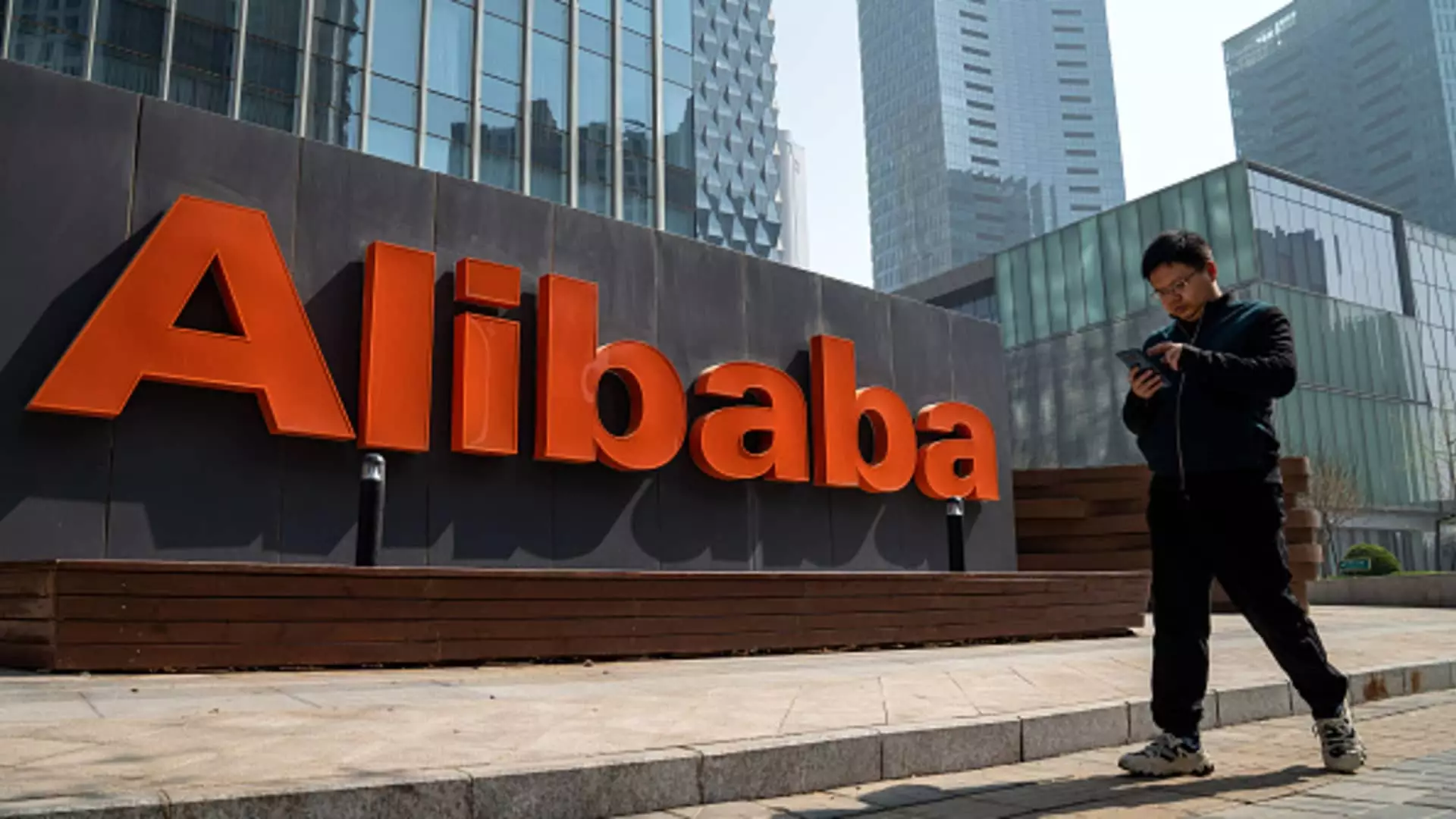In the latest financial disclosure, Alibaba, the Chinese e-commerce giant, showcased a complex landscape for its business operations during the September quarter. While profit margins exceeded market expectations, the company struggled to maintain its revenue growth amidst a decelerating consumer market in China. This article delves into the nuanced implications of Alibaba’s performance in the context of a challenging economic environment and highlights future outlooks against the backdrop of evolving consumer behavior and governmental policies.
Alibaba reported a staggering 58% year-on-year increase in net income, amounting to 43.9 billion Chinese yuan (approximately $6.07 billion). This remarkable profit surge was primarily propelled by favorable conditions in its equity investments and a decrease in investment impairments. However, these impressive profit figures juxtapose sharply against a backdrop of sluggish sales, with revenue reaching 236.5 billion yuan. This represented merely a 5% year-over-year growth and fell short of analyst forecasts, illuminating potential vulnerabilities within Alibaba’s core business segments.
It’s increasingly clear that while cost containment and investment performance can initially bolster financial standing, the long-term health of the enterprise is critically tied to consumer spending trends. The continuing consumer pessimism in China appears to have clouded demand, putting Alibaba’s ability to build stable revenue streams under scrutiny. The divergence between profit and revenue highlights a critical reminder: financial performance metrics do not invariably reflect underlying operational health.
The current climate for Chinese commerce is tepid, as illustrated by Alibaba’s primary competitors. JD.com also reported revenue misses recently, amplifying concerns surrounding retail prospects in the world’s second-largest economy. Chinese consumers have exhibited considerable restraint in spending, a trend aggravated by uncertainties stemming from the ongoing real estate market slump and other macroeconomic factors.
Despite these challenges, signs of improvement emerged during October when retail sales posted a better-than-expected growth of approximately 4.8% year-on-year. The Singles’ Day shopping holiday further demonstrated consumer resilience, representing a benchmark for the overall health of retail sentiment in China. Alibaba reported “robust growth” in gross merchandise volume during this peak shopping period, with a record-high number of active buyers, suggesting that while consumer confidence is fragile, there is potential for recovery.
Despite Alibaba’s strong quarterly profits, the company remains acutely aware of regulatory headwinds that were prevalent in recent years. The sweeping crackdown on technology companies by Beijing has left a lasting mark, prompting Alibaba to realign its business strategy and leadership. The company is now keenly focused on adapting to evolving regulations and establishing safer operational parameters moving forward.
The management, under CEO Eddie Wu, expressed renewed determination to navigate the turbulent business landscape and invest in long-term growth. Notably, Alibaba’s Cloud Intelligence Group reported a year-on-year increase in sales, showcasing the success of its diversification efforts. This sector, which is pivotal in the broader technological landscape, is expanding rapidly, with AI-related revenues posting exceptional growth. The company’s strategic positioning in the AI arena illustrates a proactive approach to capitalize on emerging technology trends, even as it faces formidable competition.
Alibaba’s exploration into international markets also reflects its adaptive strategy amid domestic challenges. Sales from its overseas platforms such as Lazada and Aliexpress rose significantly, contributing to a 29% increase in year-on-year revenues. This trend signals the company’s intention to solidify its presence outside China, leveraging global e-commerce opportunities as a counterbalance to domestic pressures.
A noteworthy aspect of Alibaba’s ongoing strategy includes the unveiling of new AI-driven tools aimed at supporting small businesses in Europe and the Americas. This initiative not only enhances Alibaba’s service offerings but also strengthens its competitive positioning against global tech rivals such as Microsoft and OpenAI. The company’s recent five-year collaboration with Indonesian tech giant GoTo further exemplifies its commitment to establishing robust international alliances.
Alibaba’s quarterly earnings report encapsulates both triumphs and challenges, painting a nuanced picture of the e-commerce giant. While record profits signal resilience, the softer revenue figures expose weaknesses in consumer demand, exacerbated by a complex economic climate. As Alibaba inkles its future in a rapidly evolving marketplace, maintaining adaptability through regulatory compliance, international outreach, and technological innovation will be essential. Only time will reveal whether Alibaba can transform its current mixed bag of results into sustained growth and market leadership in the years to come.

